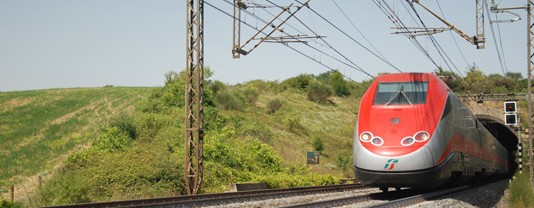There are few hubs in Italy which are as important for rail traffic as Bologna. Practically all the lines from the large cities in the Po Valley Plain, from Milan to Verona, right over to Venice, meet up here before they proceed to cross the Apennine Ridge and continue towards the centre and south of Italy, to Florence, Rome and even further south, Naples. The history of the FS (Italian State Railways) has always been closely linked to this railway hub, both during WWII and sadly, even more recently. It was on 2 August 1980 that Bologna station, partly due to its importance, became the target of one of the most vicious terrorist attacks seen in modern Italian history. A bomb, left in the second class waiting room, exploded destroying most of the main building and with devastating consequences: 85 dead and 218 wounded. Today, a memorial stone stands as a reminder of the massacre. Last year saw Bologna back in the headlines, only thankfully this time for a happier occasion when the first new underground station of the high-speed line in Italy was opened.
Bologna is a complex hub to manage, both in terms of traffic circulation and maintenance operations for lines and stations. The network in Emilia Romagna covers 1,306 km, with an overall length of track exceeding 2,000 km. This includes 742 km of main lines, 394 km of secondary lines and 170 km of nodes. The high-speed network, between the main line tracks and the tracks creating connections with the standard network, covers over 300 km. We spoke to the manager in charge of the Maintenance and Operations Department for RFI in Bologna, Mr. Also Isi, engineer.
Full article is available only for registered users.
Click the link below to download pdf version of Railway Engineering
